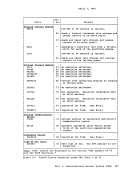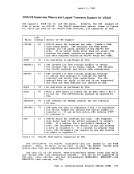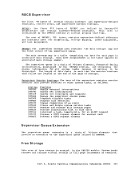Apr il 1, 1981 0 r- I V*1 I V*2 I VMCPFUNC VMCPMID 8 I I VMCPUSER 10 I- I VMCPVADA VMCPLENA 18 I , VliCPVADB VMCPLENB 20 I , VMCPUSE 28 L- V* 1 (VMCPFLG1 )
is a flaq byte used to specify options associated with a
particular subfunction.
This flaq byte can be set tothe following values: VMCPAUTS (X'SO') Indicates, for the AUTHORIZE subfunction, an AUTHORIZE SPECIFIC request. When this bit is set, the VMCPUSER field
must contain the userid of the sink virtual machine. The
status of the specified sink virtual machine is not checkedby the control program (CP) at this time. VMCPPRTY (X'40') Indicates, for SEND, SEND/RECV, SENDX, and IDENTIFY requests, a PRIORITY message request. For an AUTHORIZE request, it indicates an AUTHORIZE PRIORITY request. You cannot send PRIORITY messages to another virtual machine
unless that virtual machine has been authorized forPRIORITY messages. The SEND and RESPONSE external
interrupts for aPRIORITY' message are queued ahead of
pending nonpriority external interrupts.VMCPSMSG (X'20') Indicates that the virtual machine will accept messages
sent via theSMSG command.
Bits 3 through 7 are reserved forIBM use.
160 IBMSystem programmer's Guide
is a flaq byte used to specify options associated with a
particular subfunction.
This flaq byte can be set to
must contain the userid of the sink virtual machine. The
status of the specified sink virtual machine is not checked
unless that virtual machine has been authorized for
interrupts for a
pending nonpriority external interrupts.
sent via the
Bits 3 through 7 are reserved for
160 IBM















































































































































































































































































































































































































































